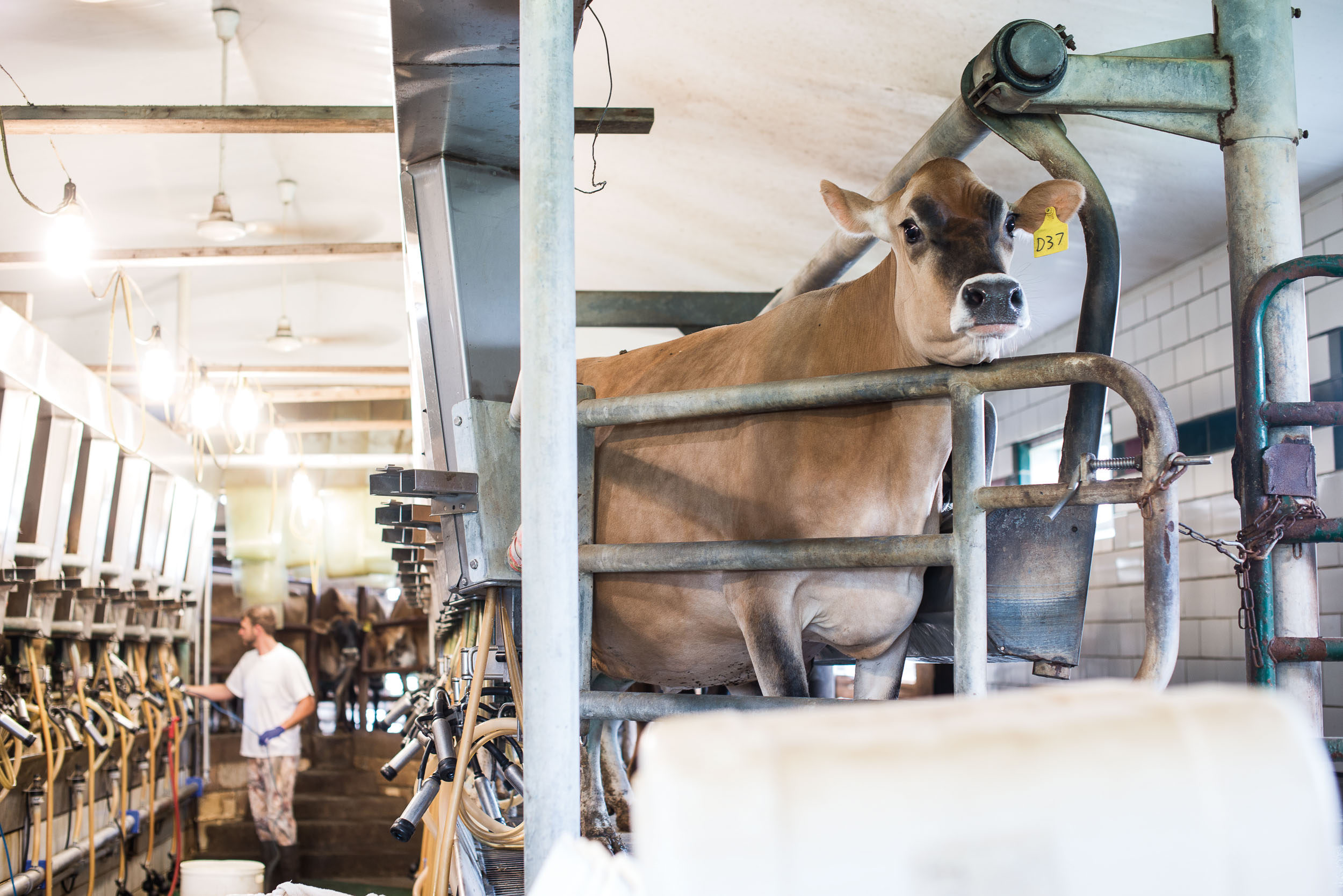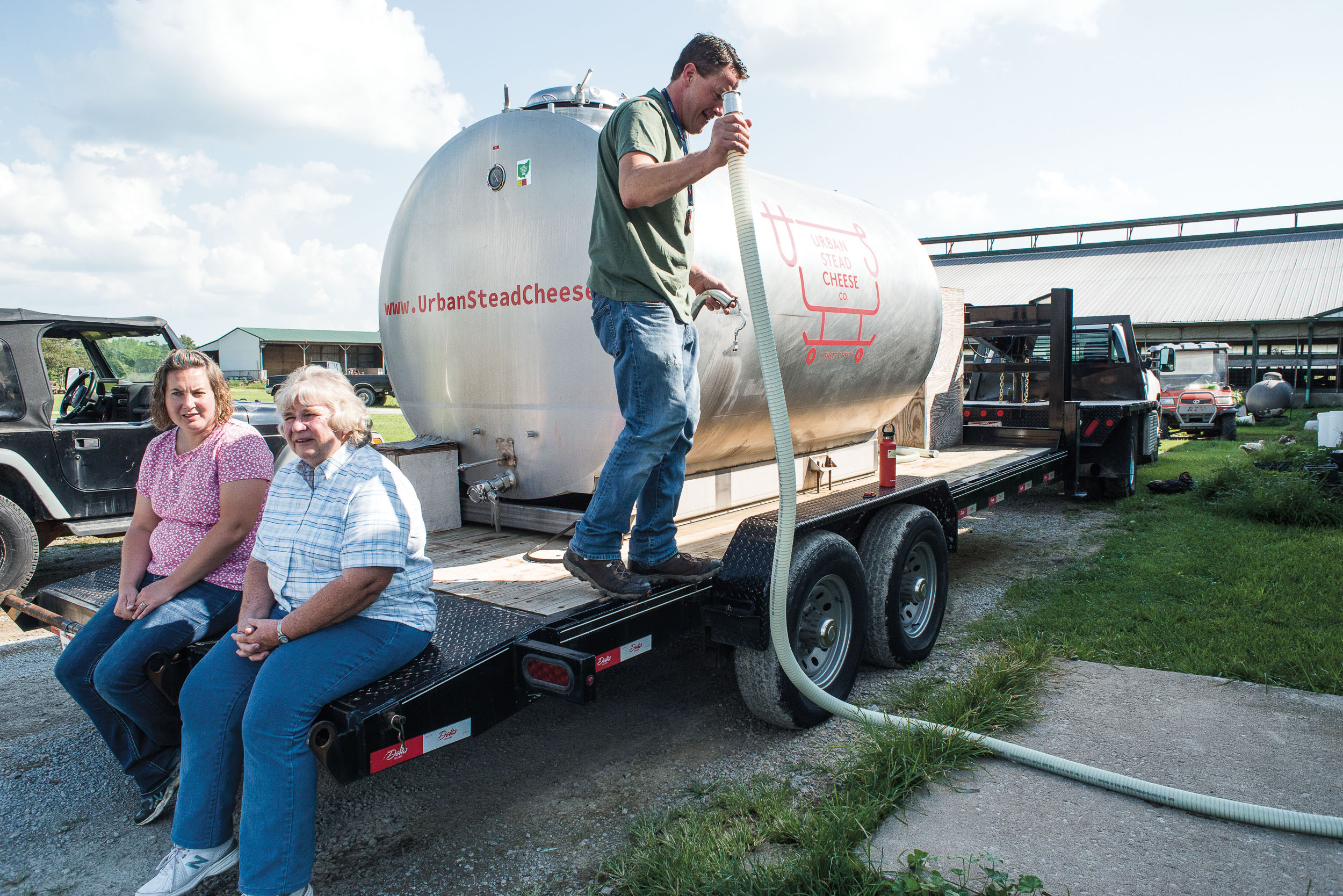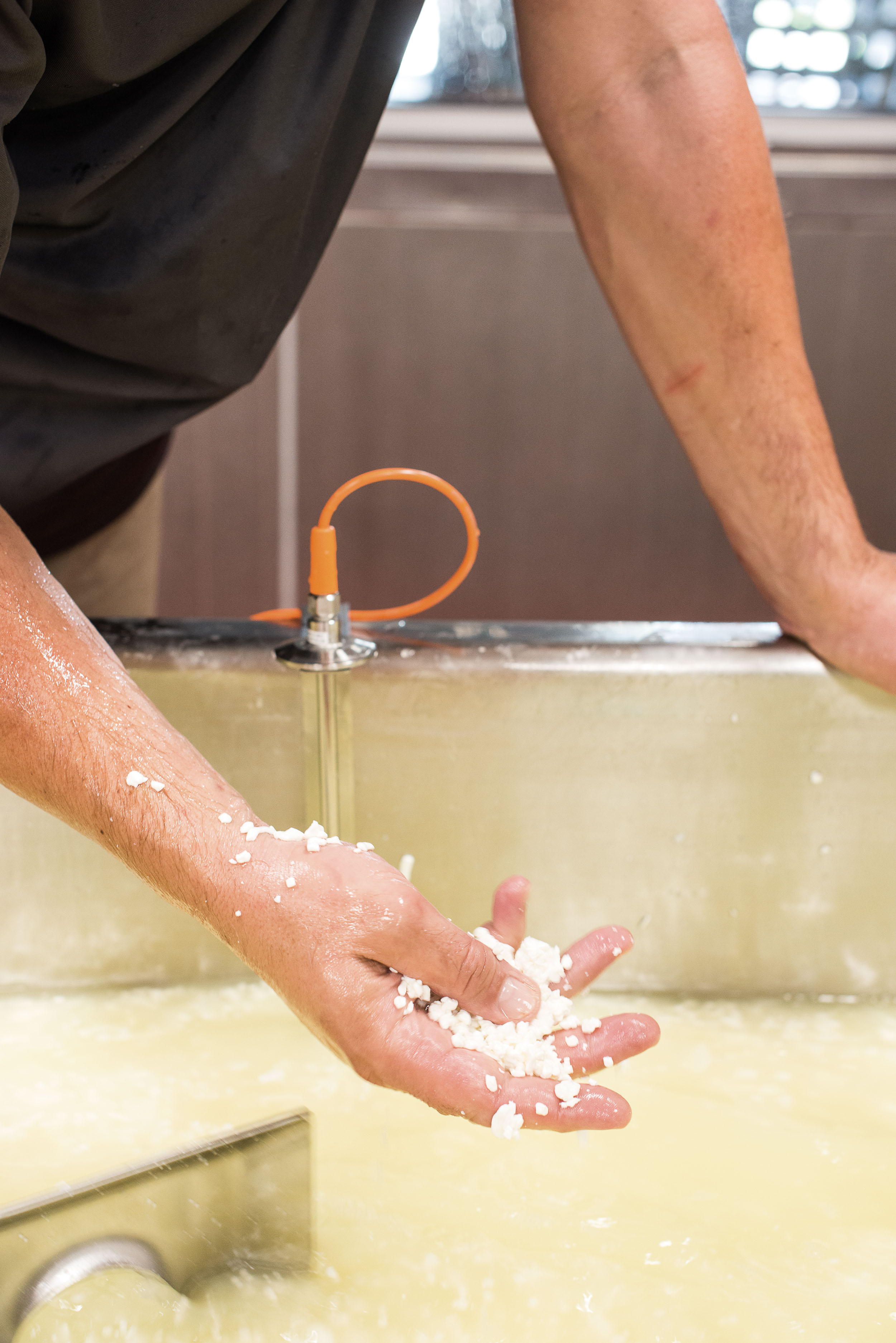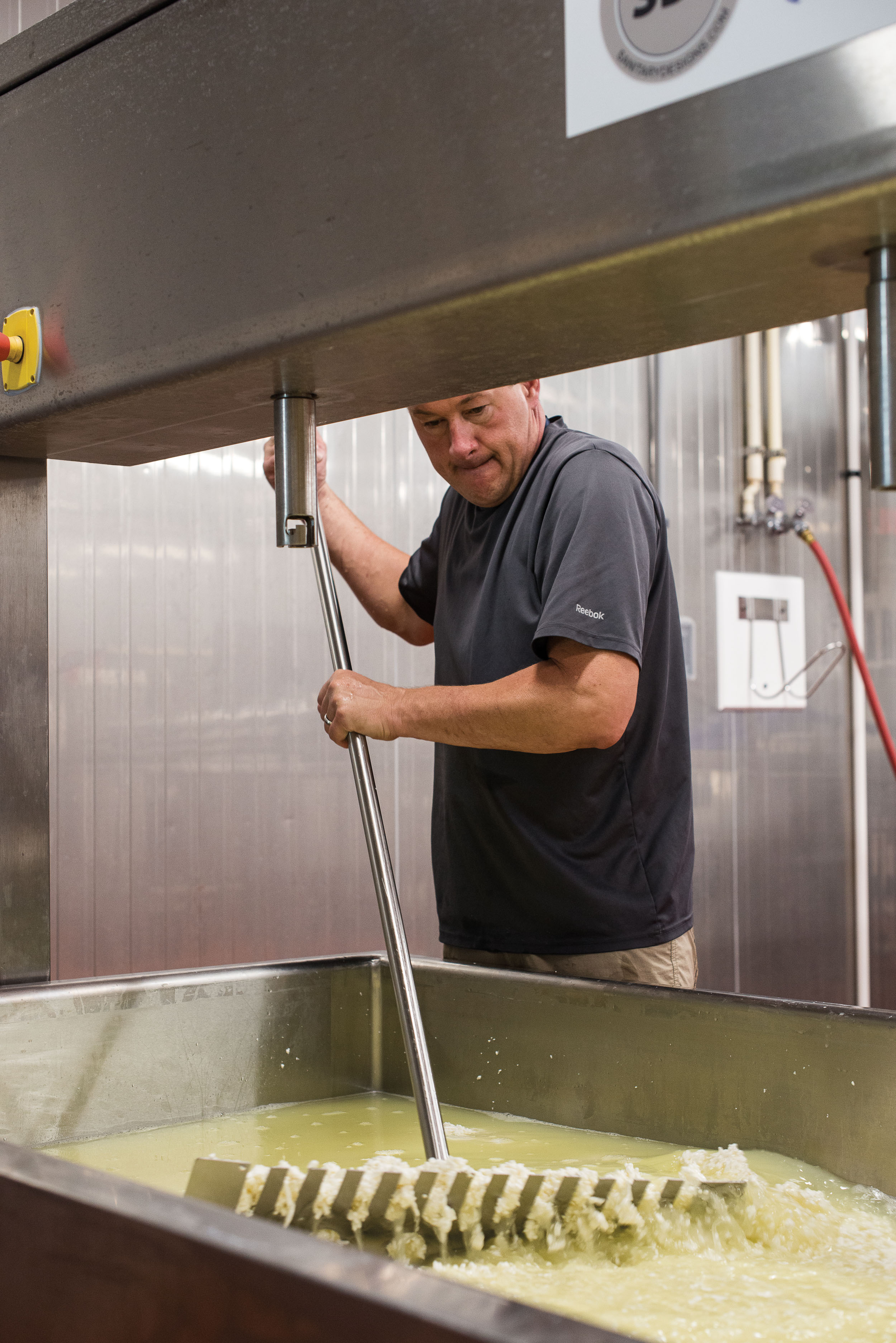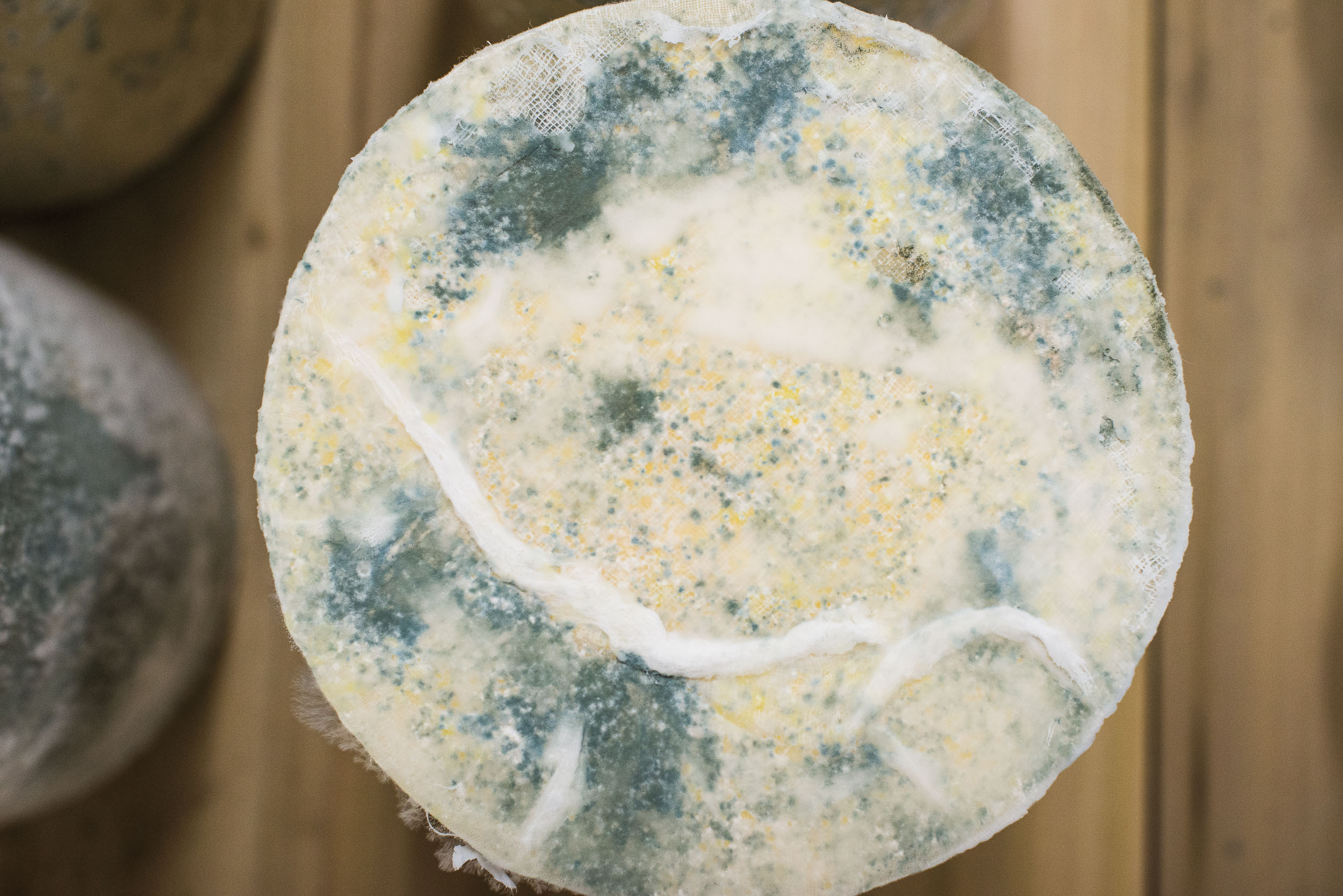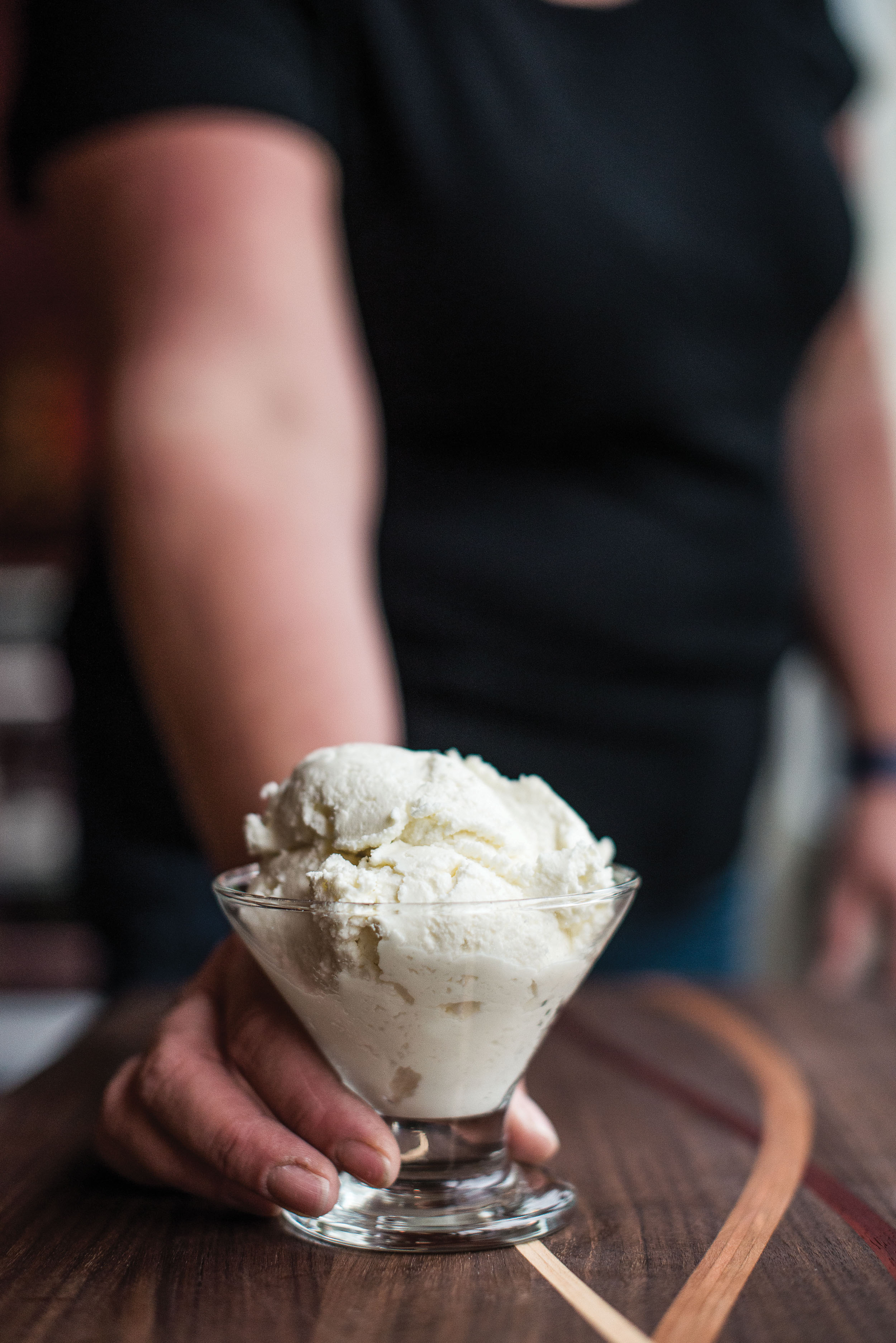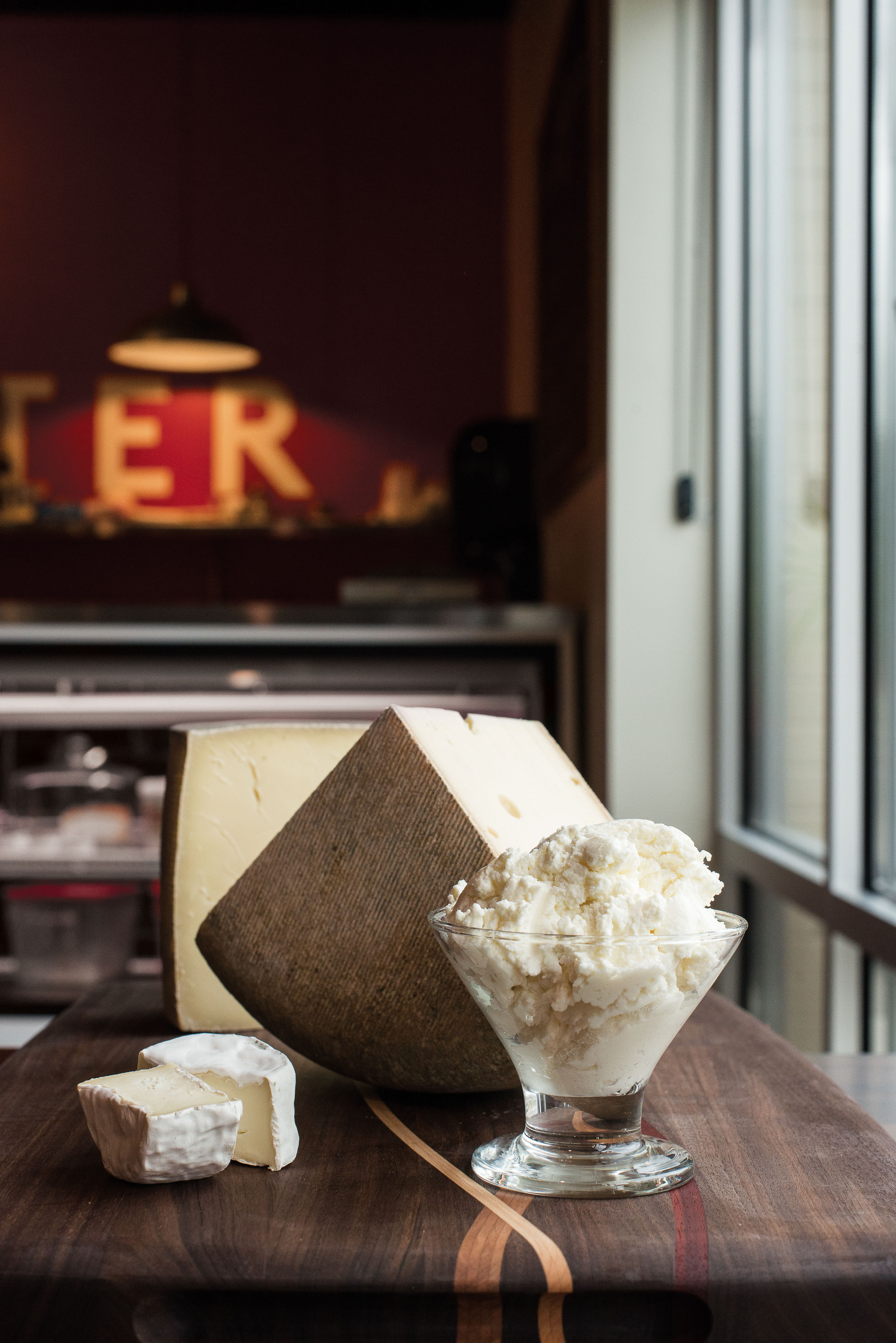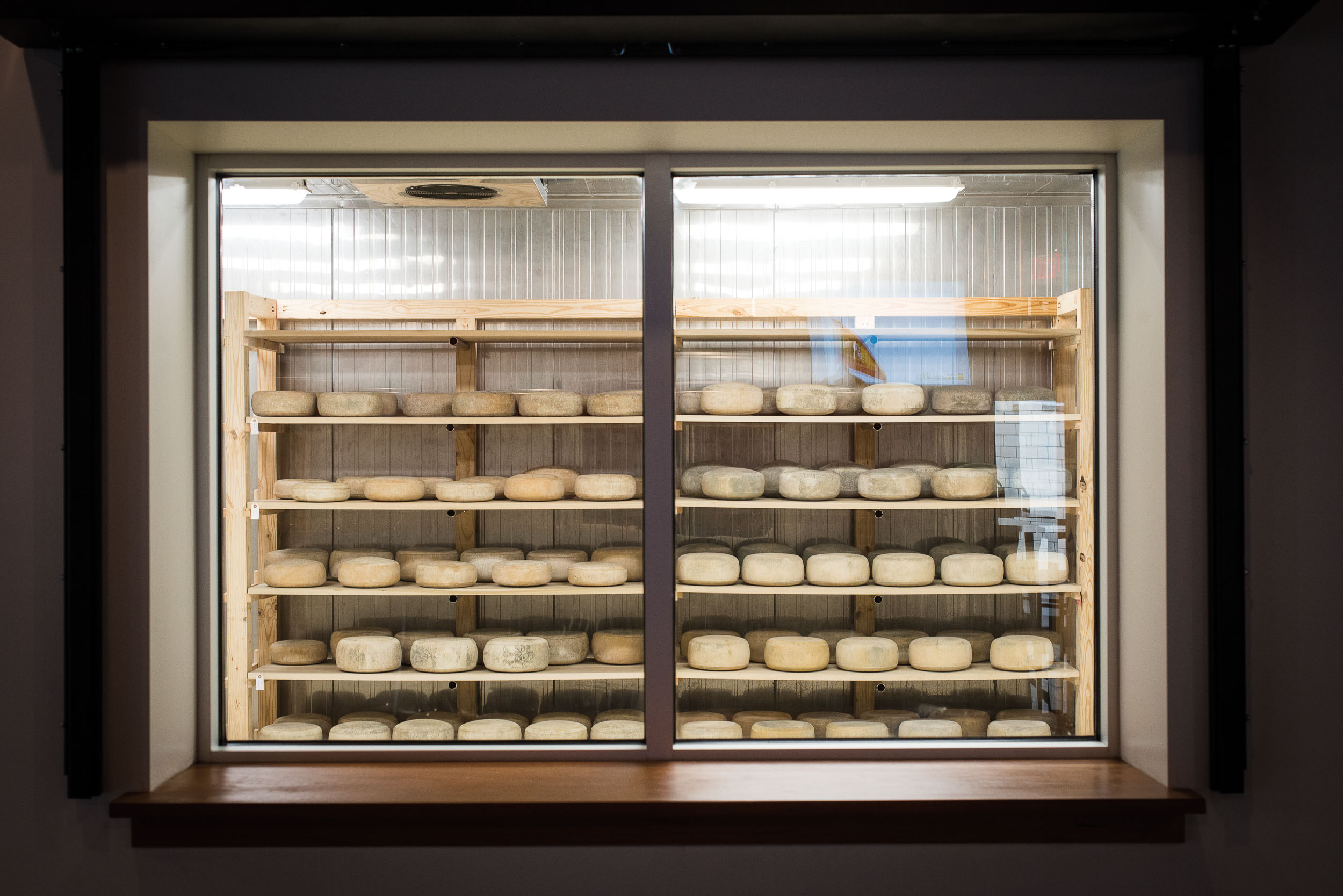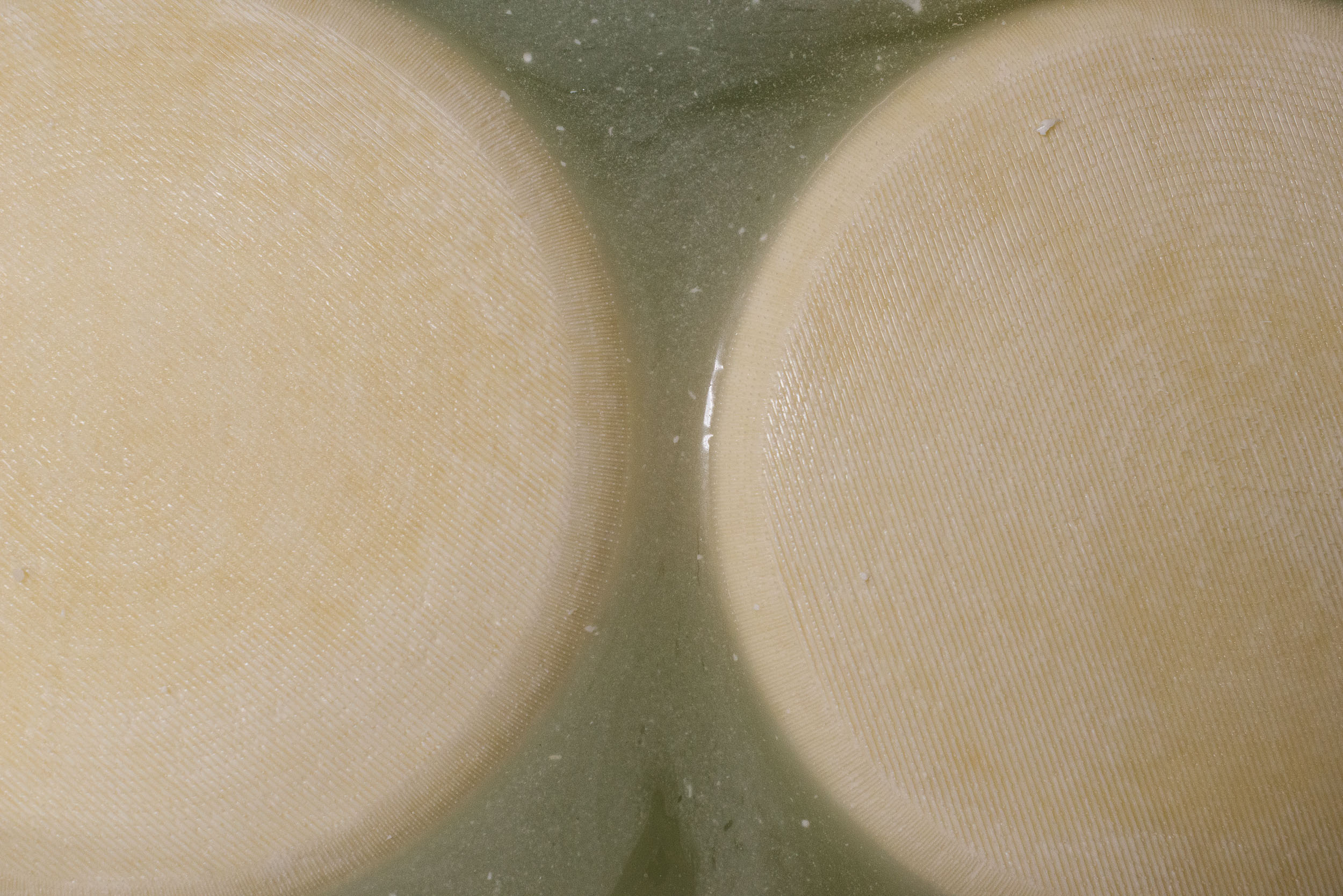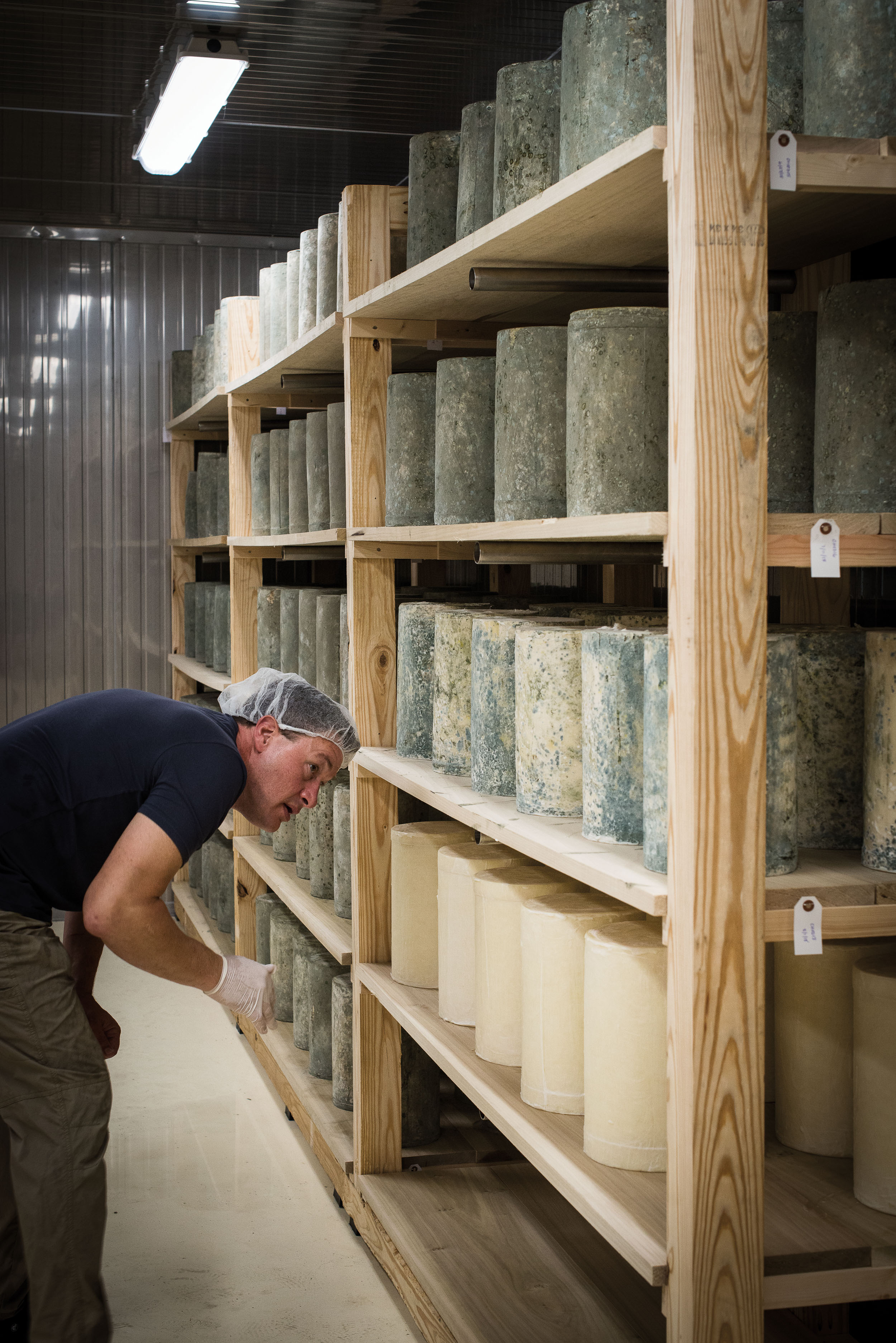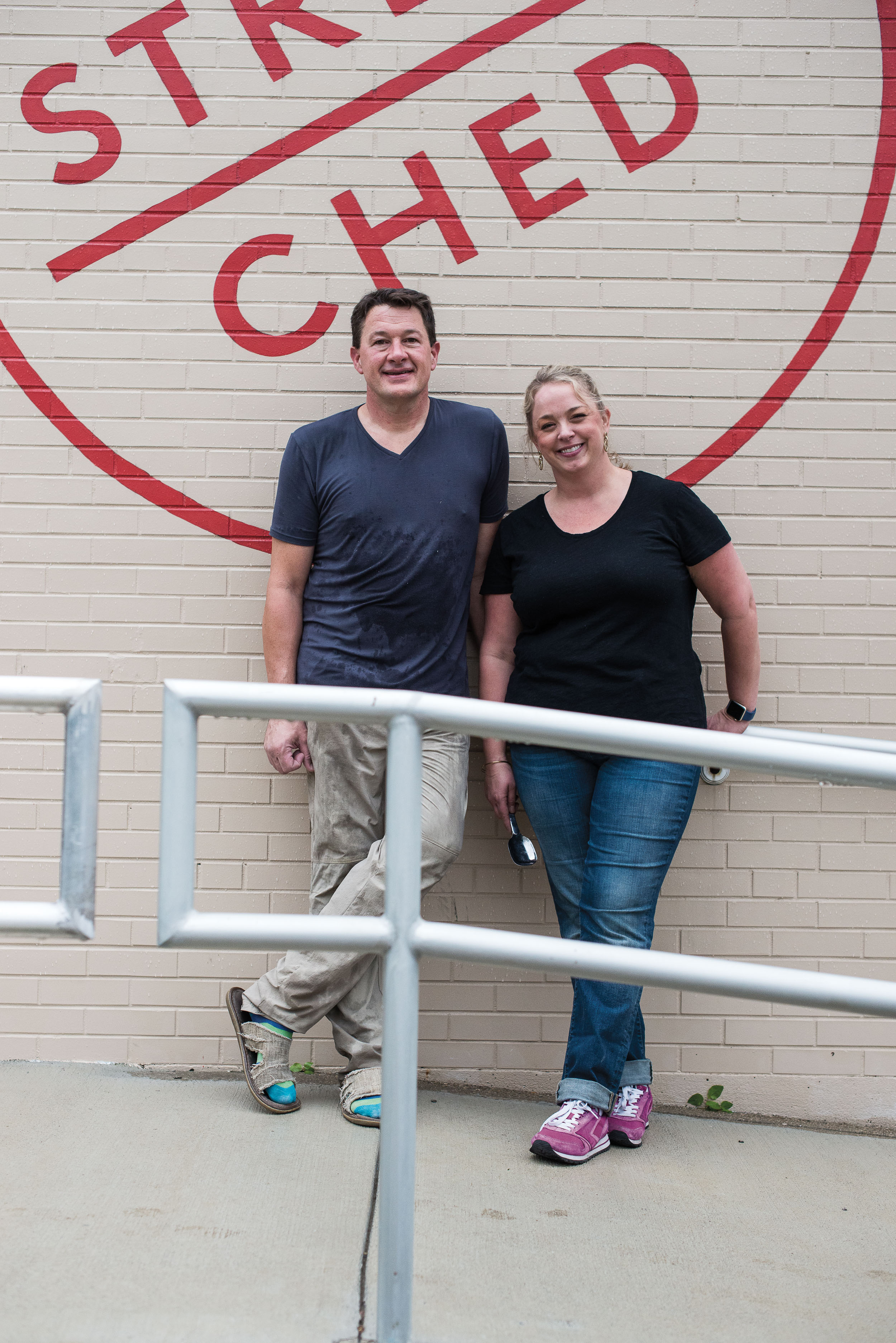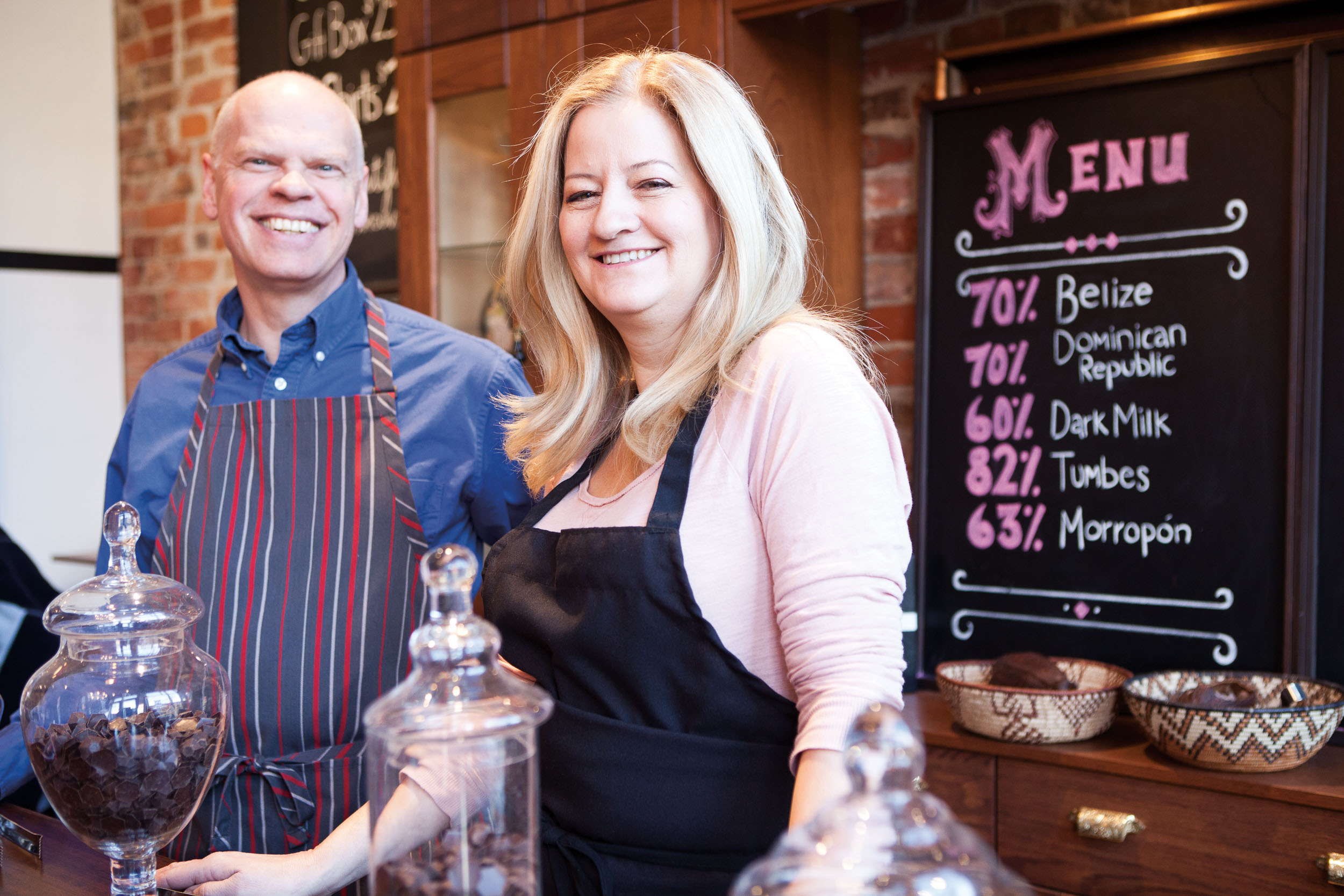Cheese, a Local Food Love Story

Cheesemakers Andrea and Scott Robbins have partnered with a network of providers and producers in a virtuous local food circle.
photography by Julie Kramer
This story represents an ideal vision of what local food can be. It’s the story of two artisans, two farmers, two chefs; of rural agriculture and urban redevelopment; of the fearlessness of starting a new business and the safety net of collaboration. It’s an old-fashioned story, to be sure, but one with modern appeal. And it’s a romance, one with a (so far) happy ending.
Near 5:00 p.m. on a June Monday, Andrea and Scott Robbins have already put in a full day of administrative tasks and a lengthy interview with this writer. They’re about to buckle into the cab of their flatbed truck for the hour-and-some-change drive east, from Cincinnati’s Evanston neighborhood to Sardinia, OH.
They’re off to collect their weekly supply of about 6,000 pounds of Jersey milk—a supply that, over the next few days, they will transform into pounds of cheddar curds, quark, Tomme, Brie, Gouda, and other handmade fresh and aged cheeses.
Ever since they opened Urban Stead, their cheesemaking operation and tasting room on Woodburn Avenue in February, this Monday milk run is pretty much the couple’s only quiet time together, when they can rehash and plan and dream about their startup business.
With a mantra of “cheddar for the better,” Urban Stead aims not only to produce great cheese, but to create a new local food narrative. Working with farmers and chefs, the Robbins have woven a virtuous circle of collaboration and community. Milk from an Ohio Valley farmer becomes small-batch cheese; whey leftover from the cheesemaking process feeds another farmer’s livestock; cheese reaches hungry diners at the Urban Stead tasting room and at a downtown farm-to-table restaurant. Every week, the cycle repeats.
Part 1: Rural Meets Urban
The Robbins didn’t undertake to open the business lightly. It took Scott four years of serious dedication to the art of cheesemaking. His passion for cheese is rooted in his longtime experience in food and wine. A certified sommelier who opened or managed the wine and beverage program for 15 restaurants in the Ohio Valley region, he left a sales position with Vintage Wine Distributor to dive into cheese. One can see the parallels: Both wine and cheese are fermented products, crafted with care, and taste uniquely of place. “We actually looked at winemaking,” Andrea says about their dreams of owning a business. “It’s so difficult to grow great grapes here. But there’s great milk.”
Both Ohio natives and both the grandchildren of dairy farmers, Scott and Andrea say cheese is in their blood. They’ve long experimented with making wine, pickling, and fermenting at home. Foodie travelers, they fell in love with the cheeses made at Cowgirl Creamery in the Bay Area and Beecher’s in Seattle.
“Cheese is one of the oldest foods in the world,” Andrea says. “We knew we wanted to participate in the local food space. We traveled a lot, and we always kept coming across cheese. Beecher’s at Pike Place Market in Seattle confirmed our idea of an urban creamery.”
“Being in the city confines was a priority when we started looking for space,” Scott says. “We decided we wanted to do an urban creamery because we wanted people to know where their food came from.” And, continues Andrea, “we wanted to contribute to the rehabilitation of a building and an emerging neighborhood.”
The couple did their homework: Scott studied cheesemaking with Peter Dixon of Parish Hill Creamery in Vermont. They hired dairy consultant Neville McNaughton (a.k.a. Dr. Cheese) to help design the operation and evaluate locations, and Sanitary Design Industries to engineer the cheesemaking facility and install the equipment.
They looked at options in the East End and Madisonville before purchasing the low-slung cinderblock building on Woodburn Avenue just north of the East Walnut Hills main drag. The area is on the cusp of renewal, with a baseball field renovated by the Reds Community Fund and a block of 140 apartments across from Urban Stead; 22 new single-family homes are going in just up the street.
“When we were talking about what this could be, I remember saying, ‘I want to make a mark on the world and on the city,’” Andrea recalls. “We wanted to change the way cheese is made and enjoyed and sold,” Scott continues. “We wanted to do it in an urban setting. How could we preserve the farmstead model and do it on our terms?”
Every Monday, the Robbins haul milk from Bohls Jerseys in Highland County to the Evanston neighborhood of Cincinnati. Over the week, it’s heated and cultured and formed into fresh cheeses and those for aging, including cheddar and a bloomy Camembert. Wednesday is Fresh Curd Day, a hook for fans of the salty, squeaky cheese nubbins. Urban Stead’s Tomme, cloth-bound cheddar, and Gouda are aging to perfection.
Part 2: Artisans Meet Farmers
Milk, of course, is the essential ingredient in cheesemaking. As they were well into the buildout of their new facility, the Robbins didn’t have any. They were intent on using local milk, and they knew their relatively small quantity meant they’d have to procure a truck to pick it up themselves. “Finding a farmer was really stressful,” Scott says. “We were halfway into the project and we didn’t have a milk source.”
The timing was tricky: Once a buyer signs a milk contract, he’s on the hook to take delivery. Milk is a perishable product, and the dairy farmer can’t have it sitting in his tank for a day or more while the buyer gets his act together and picks it up. But the Robbins couldn’t take delivery until they had a certified, health department-inspected cheesemaking operation in which to put it.
Here’s where our first instance of collaboration and connection comes into our local food story: Urban Stead’s ideal milk source was just a couple of phone calls away.
As the Robbins were developing their new creamery, they worked with Eric Schaeffer at the Ohio Department of Agriculture to ensure that it would meet state and federal requirements. “Scott mentioned to Eric that we were looking for a local milk source,” Andrea recalls. As it happened, Schaeffer was a former dairy farm inspector who knew the region’s quality producers. “Eric pointed us in the direction of Scioto Milk Producers Association, which is the co-op of which Bohl’s Jerseys is a member. We then reached out to Ron Fenton, the manager of the co-op; we expressed our desire to work with a local Jersey farmer to make cheese, at which point he connected us to the Bohls.”
Dusty Bohl, the third generation (along with his wife, Amy and brother, Kelly) to manage Bohl’s Jerseys in Sardinia, welcomed the new business. The 600-acre farm incorporates corn, soybeans, and a herd of 300 milk cows. Bohl says they’re “on the big side of a small dairy operation,” producing just over 11,000 pounds of milk per day. (In Ohio, milk is measured in pounds, not gallons.) Urban Stead takes 5,600 to 6,000 pounds per week in those Monday pickups; the rest goes to the United Dairy processor in Charleston, WV, where it’s pasteurized and homogenized into fluid milk.
“Our farm worked out great for Urban Stead,” Bohl says. “We have two bulk cooling tanks where we store the milk until their truck comes, so we can set aside the right amount for them in one tank and they can come to pick up and we can go on with our daily chores.”
Jersey cows produce milk with the highest butterfat of all dairy cattle breeds, which makes it ideal for cheesemaking, Bohl and Andrea Robbins agree. “For the cheesemaker, that’s the highest quality,” Andrea says. “We couldn’t be happier. We know they have to make accommodations for us because we’re a small customer.
“We’re so appreciative of what we get from them, and they know that this relationship and this milk is essential,” she continues. “They ask how the cheesemaking is going. They care about how their milk is working for us, and we’ve taken our cheese back out to them.”
“What we’ve tasted is extremely good,” Bohl says. “We typically know where our milk is going, but in the larger scheme of things it gets blended in with several hundred pounds of milk. When Scott and Andrea started making cheese using totally our milk—well, that gives you a really warm feeling.”
Milk is the input in Urban Stead’s production; cheese and whey are the outputs. Whey, the liquid left behind when the cheese curds are lifted out, is loaded with probiotics and protein. It seemed to the Robbins a shame to dump this healthful byproduct. Cue another collaborative partner: TS Farms.
Once a week, when she’s in the city for a farmers’ market or CSA delivery, Tiffany Shinkle swings by Urban Stead to fill one or two 300-gallon totes with whey. She hauls it back to the family’s New Vienna, OH, farm, where it feeds nearly 60 pigs. Even though the pigs are pastured, they’re not grazing animals and have to be given supplemental feed. Adding the nutrition-packed whey to the hogs’ water helps the Shinkles stretch their feed budget and enhances the flavor of the resulting meat.
Shinkle says she learned about Urban Stead from a neighboring dairy farmer who belongs to Scioto Milk Producers along with the Bohls. TS Farms also raises dairy cows, and Shinkle feeds leftover milk and whey from their herd to the pigs, but they don’t have nearly enough. TS Farms’ pigs and chickens also feast on less-than-perfect or leftover cheese from Urban Stead.
Shinkle and Andrea Robbins have talked about closing the loop between their two businesses by selling TS Farms pork at Urban Stead’s tasting room or using it on charcuterie boards to accompany the cheese. “When I’m there picking up the whey, they talk to their customers about our farm and what we’re doing,” Shinkle says. “I’d like to see them also be able to offer our pork products to their customers. If I can help Andrea and Scott out by getting rid of their waste, and put it into our pork, and then they can turn around and put our pork in their store, then it completes the cycle. It helps us all out.”
Part 3: Producers Meet Chefs
In February, about two weeks before they opened, Urban Stead took its first delivery of milk and Scott began making cheese. He started with cheddar curds—hunks of cheese that are eaten fresh instead of being compressed into wheels and aged to become cheddar—and quark, a German-style fresh farmer’s cheese.
“When I heard that local people were producing quark, I was like, ‘Hell yes!’” exclaims chef Jackson Rouse. Rouse’s Bauer Farm Kitchen is, he says, the only German farm-to-table restaurant in North America. And quark is a staple of German cooking, going back centuries. “Every civilization has a fresh cheese; adding an acid to milk separates the curds from the whey, and there you have it,” Rouse says. Urban Stead’s quark, he says, is the real deal.
“We do a Bavarian beer cheese dip with their quark and Brie, onions, garlic, butter, and beer all whipped together,” Rouse says. “In Germany, it’s served with crudité. It’s the standard dish at Oktoberfest.
“We have five or six local producers involved in making this one dish,” Rouse continues. “The cheese from Urban Stead, the vegetables from local farmers, the volkenbrot is made for us by Blue Oven, the real Swabian pretzels come from Tuba Baking Company. It’s the total reflection of what German food is: community.”
In addition to the Bavarian cheese, Rouse uses quark for his customer fave tarte flambée, an Alsatian-style flatbread with onions, cheese, and egg. Too, local baker Natalie Butcher, who runs The Hungry Noodle from her home kitchen, uses it to make a cheesecake-like dessert topped with fruit that’s always on the menu at Urban Stead’s tasting room. For special occasions (like during the World Cup viewing party at the creamery), Butcher creates sweet savory tartlets with quark and local produce for Urban Stead. (See sidebar for more on this versatile cheese.)
Rouse says he’s been using local ingredients for 20-some years, and while it’s easier to source locally than it used to be (he credits Ohio Valley Food Connection for streamlining procurement for chefs), it’s still a challenge. Local meat and produce is more expensive than foodservice products. But for Rouse, it’s not just a matter of better quality; it’s a matter of relationships. “That’s what a community restaurant is: You support the guys around you. There’s nothing better than when a farmer comes in for dinner and says, ‘I love how you’ve elevated what we’ve produced.’”
Part 4: To Be Continued
The story of Urban Stead isn’t just about Andrea and Scott Robbins. It’s about a circle of other food entrepreneurs who’ve come together through community connections and who are committed to supporting each other.
In some ways, what they’re doing isn’t new: Farmers and neighbors have always helped each other out, and food was historically locally produced, processed, and distributed. “Most farming communities are very tight-knit and if there’s a problem, everyone’s there to lend a helping hand,” Bohl says. “Don’t get me wrong: It’s gotten more competitive on the business end. But if there’s an accident or anyone gets sick, the neighbors are here to help. That’s how a lot of farmers are.”
In other ways, the story feels thoroughly modern: Ancient foods and methods introduced to a new generation of urban locavores by passionate young farmers, producers, and chefs. “When I first started 25 years ago, people didn’t give a shit about farm to table,” Rouse recalls. “Now, I tell my young cooks, ‘It’s so easy for you to make great food, you don’t even know. There’s never an opportunity when you don’t have great ingredients to work with. So relish that.’”
Will this local food narrative continue? More important, will others carry it forward, interpret it, and make it their own? That remains to be seen. And we here at Edible Ohio Valley are ready to share those stories, too.
Bryn’s long career in publishing took a left turn sometime around 2010, when she discovered the joy of food writing. Since then, she’s found professional nirvana as the editor of Edible Ohio Valley, author of The Findlay Market Cookbook, and occasional instructor at The Cooking School at Jungle Jim’s. Find her seasonal recipes at writes4food.com.

